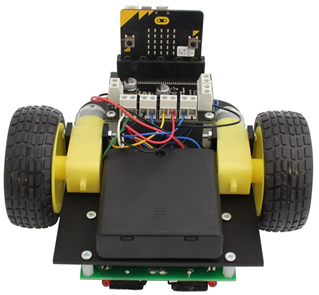The source code of all examples can be downloaded from a link in the right side bar.
Moving robots are considered to be the prototype of robots, probably because it is more humanoid than other machines. Moreover self-driving robots are of great actuality because self-driving cars (and other vehicles like drones) will revolutionize mankind in the near future. The most elementary version of a self-driving car is a platform equipped with two electric motors and a caster wheel. Be activating the speed of the motors independently the vehicle can move forward, backward and turn.
